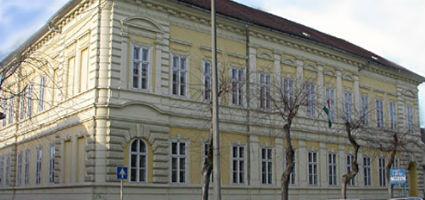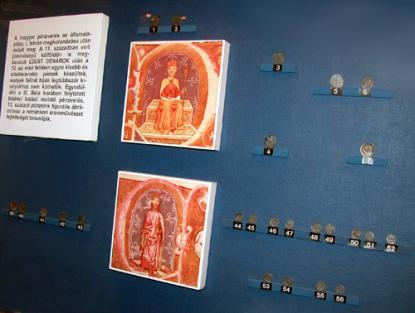2024. November 23. Saturday
Károly Viski Museum - Kalocsa
 |
Address: 6300, Kalocsa Szent István király út 25.
Phone number: (78) 462-351
E-mail: info@viskikarolymuzeum.hu
Opening hours: 01.11-14.03: closed
15.03-14.05 and 16.09-31.10: Tue-Sat 9-17 15.05-15.09: Wed-Sun 9-17 |
Museum tickets, service costs:
|
Ticket for adults
|
300 HUF
|
|
|
Ticket for students
|
150 HUF
|
|
|
Ticket for pensioners
|
150 HUF
|
|
|
Guide
|
600 HUF
|
|
|
Photography
|
800 HUF
|
|
|
Video
|
3000 HUF
|
We can follow the history of the collection of the coins back to the end of the last century. When the Jesuits took over the grammar school from the Piarist order in 1860, 20 coins were also mentioned.
In the 1870' s the archbishops TÖRÖK János and HAYNALD Lajos bestowed the grammar school their valuable collections.

The collection played an important role in the eductaion betwen the two world wars. It enhanced the historical knowledge and interest of the pupils.
After 1944 the collection of 11 thousand items were party demaged by the war, but the teachers of the school protected the remains of the collection and handed it over to the Viski Károly Museum.
regardless of its distorted state, the collection represents a great historical and educational value.
The coin collection might be devided into four groups. 1: ancient coins: Greek, Roman, Bizantian. 2: Hungarian coins of all ages. 3: Foreign coins. Several centuries of more than 50 countries are represented. 4: Ecclesiastic, Catholic coins.

The collection played an important role in the eductaion betwen the two world wars. It enhanced the historical knowledge and interest of the pupils.
After 1944 the collection of 11 thousand items were party demaged by the war, but the teachers of the school protected the remains of the collection and handed it over to the Viski Károly Museum.
regardless of its distorted state, the collection represents a great historical and educational value.
The coin collection might be devided into four groups. 1: ancient coins: Greek, Roman, Bizantian. 2: Hungarian coins of all ages. 3: Foreign coins. Several centuries of more than 50 countries are represented. 4: Ecclesiastic, Catholic coins.
